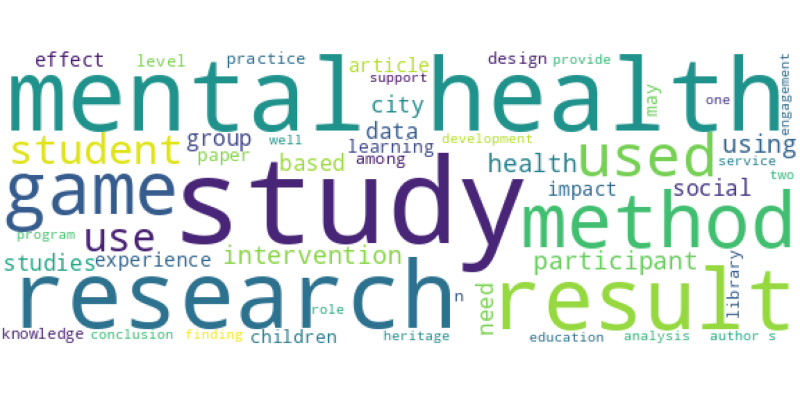| Id | 2580 | |
| Author | Rodwin A.H.; Shimizu R.; Travis R., Jr.; James K.J.; Banya M.; Munson M.R. | |
| Title | A Systematic Review of Music-Based Interventions to Improve Treatment Engagement and Mental Health Outcomes for Adolescents and Young Adults | |
| Reference | Rodwin A.H.; Shimizu R.; Travis R., Jr.; James K.J.; Banya M.; Munson M.R. A Systematic Review of Music-Based Interventions to Improve Treatment Engagement and Mental Health Outcomes for Adolescents and Young Adults,Child and Adolescent Social Work Journal |
|
| Link to article | https://www.scopus.com/inward/record.uri?eid=2-s2.0-85141974455&doi=10.1007%2fs10560-022-00893-x&partnerID=40&md5=c8696d2c29c5b2dee327ea33c73b59e7 |
|
| Abstract | Mental health disorders and suicidality are rising among adolescents and young adults (A-YA) while rates of treatment engagement remain notoriously low. Emerging research supports the potential of music-based interventions to improve mental health, but their efficacy remains unclear for A-YA. This systematic review evaluates the evidence on music-based psychosocial interventions to improve engagement in treatment and/or mental health outcomes among A-YA. This review was prospectively registered with PROSPERO and followed the Preferred Reporting Items for Systematic Reviews and Meta-Analyses (PRISMA) guidelines. Twenty-six studies were extracted. There was heterogeneity of designs, populations, measures, and outcomes. A typology of music-based interventions emerged, which is characterized by combinations of three broad categories: 1) Somatosensory, 2) Social-Emotional, and 3) Cognitive-Reflective. Most interventions are Socio-Cognitive and Holistically Integrated (combines all three) followed by Socio-Somatic. All interventions involved Social-Emotional processes. Results indicate that most studies report significant effects for mental health outcomes related to social and emotional improvements and reductions of internalizing symptoms for adolescents. Few studies targeted young adults and effects on engagement were rarely measured. There is a need for more studies that use rigorous methods. This review illuminated a need for interventions that are developmentally and culturally tailored to subgroups. Finally, the field is ripe from more studies that apply experimental therapeutics to conceptualize, operationalize, and test mechanisms of change to improve the understanding of how and for whom music-based interventions work. Recommendations for embedding these innovative strategies into research and practice for A-YA are discussed. © 2022, The Author(s), under exclusive licence to Springer Science+Business Media, LLC, part of Springer Nature. |
|
| Keywords |
Wordcloud:



